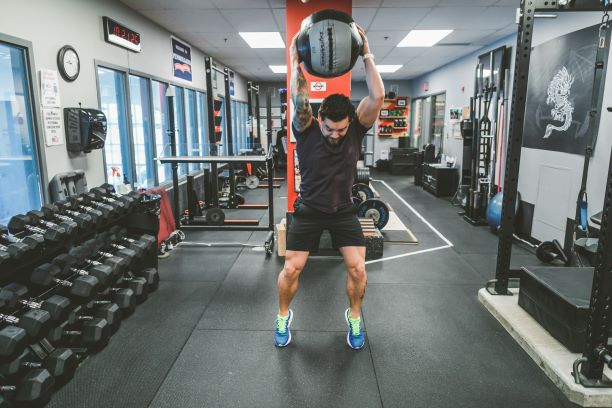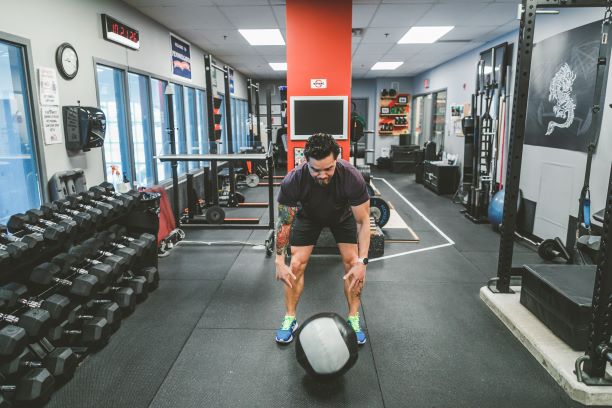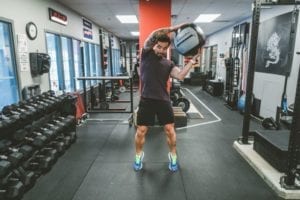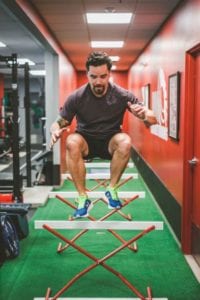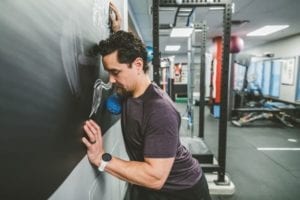A summer-time strength training program for triathletes
Strength Training During the Competitive Triathlon Season
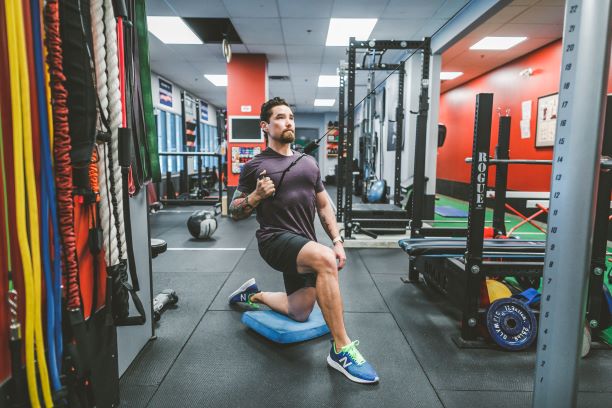 Photo by:
JP Mullowney
Photo by:
JP Mullowney
With the summer months ahead, many triathletes are gearing up to race, either in-person, or virtually. Since last year’s competitive season didn’t really happen thanks to COVID-19, the itch to race and compete this summer couldn’t be stronger. If you want to highlight all the training you did over the past year and maximize your performances, your strength training routine should be modified to reflect your upcoming goals. I’m going to assume that you included strength training into your weekly routine over the past year, but if you haven’t, the information below will still benefit your racing season.
Some triathletes may shy away from the weight room with fear of building unwanted bulk and inflexible muscles, but recent research suggests there are positive effects of strength training to endurance exercise performance, with minimal negative side effects. Strength and power training not only strengthens your muscles, joints and ligaments, it also develops intermuscular coordination, enhances athletic abilities and creates a more resilient body. Keeping injuries at bay and stringing together consecutive months of training will better develop your aerobic and anaerobic systems, leading to better fitness in the peaking months.
Periodization is probably a word you have heard of before, but in case you haven’t, it involves organizing endurance (your swimming, biking and running workouts) and strength training into cycles associated with different goals and training outcomes. Those cycles should be spread over several months to a year or more, with the ultimate goal of reaching peak performance at the time of major competitions. This is accomplished by adjusting the resistance, exercise selection, volume and intensity of your workouts. As you enter into the competitive (in season) phase of your year, several parameters of your strength workouts need to be adjusted to maximise your performance capability.
In-season strength training guidelines
1. Cut back your volume and increase your intensity
Strength training should be performed once or twice a week during the competition phase of your year. This is reduced from the 2 to 3 times a week during the pre- or off-season. The number of sets of each exercise should be reduced by roughly 50 per cent, while the weight used goes up to reflect the reduced volume. Maintain your form and focus on achieving a better connection with your target muscles. Since your training volume is less, you want to ensure the reps you do are effective.
Exercise Example: Half Kneeling Single Arm Pull Down and Row
Why: To strengthen the overhead pulling action of the Latissimus Dorsi while focusing on scapulohumeral rhythm, while also developing the posterior oblique sling and length in the hip flexor muscles.
How: Kneel on your left knee in front of a high cable attachment. Place your right leg in front with your front foot flat on the floor. Grab the handle with your right hand and lean forward. Let your right scapula travel upwardly toward your right ear and feel a stretch in your right Lat. Pull the cable attachment to the front of your right shoulder while you depress your right scapula and squeeze it toward your spine. Let your arm travel upward until you’ve reached full length again. Next, lean back and perform a row. Tilt your pelvis posteriorly to squeeze your left Gluteus Maximus. Notice length in the left hip flexor muscle group. Lean forward and let your arm stretch overhead again. This is one rep. Finish all reps before switching knees and arms.
Do: 2 sets of 10 to 12 reps per side
2. Focus on maintaining strength and power
The competition phase is not the time of year to add new exercises that you’ve never done before. Adding in a brand-new stimulus through new exercises can lead to unwanted and prolonged delayed onset muscle soreness (DOMS) which can have a negative effect on your endurance training workouts and performance. For example, do not start doing Olympic lifts in the summer months if you haven’t been working on them in prior training cycles. A more effective training method to sharpen your muscle contraction speeds and power output is plyometric training. Also known as jump training or medicine ball training, plyometric exercises develop stiffer tendons and improve the stretch-shortening cycle of your muscles during repeated bouts of activity. A stiffer tendon combined with muscle pre-tensioning and intermuscular co-contractions can better store and utilize elastic energy, leading to improvements in movement economy.
Exercise Example: Around the Head Medicine Ball Slam
Why: To develop upper body power production while promoting thoracic mobility
How: Hold a 5 to 10 lbs medicine ball with both hands in front of your chest. Make sure the ball is a dead ball and does not bounce. Stand with your feet shoulder width apart. Bring the ball around your head as if drawing a half circle. As this happens extend upward, get tall and lift your heels off the ground. Once the ball travels just behind your head, immediately slam the ball on the floor just in front of your feet. Grab the ball and do the next rep drawing a half circle on the opposite side.
Do: 2 to 4 sets of 5 slams per side
Exercise Example: Bilateral Hurdle Hops
Why: To develop ankle stiffness and improve lower body power production
How: Space apart 6 to 8, 12 to 20” hurdles, placed in tandem. If you don’t have access to hurdles, you can do Jump Squats instead. Start behind the first hurdle. Swing your arms back, squat down slightly and jump over the first hurdle. Land softy with your feet side by side and immediately jump over the next hurdle. Make your ground contacts light and as short as possible. Walk back slowly to start your next set. If performing Jump Squats, jump repeatedly, also landing soft with short ground contacts.
Do: 2 to 4 sets of 6 to 8 jumps per set
3. Focus on recovery
Since the intensity of your endurance and strength workouts have increased, your body is going to require TLC, nourishment and supplemental drills/exercises to enhance your recovery between workouts. If you’ve been seeing a massage therapist or chiropractor throughout the year, you might have daily drills or stretches to do to ensure muscle imbalances or overuse injuries do not develop. You might need to self-massage a particular muscle daily, or stretch your Pecs, for example, to ensure proper posture and shoulder function. Quality sleep, hydration and nutrition are also important pieces of the puzzle.
Recovery Drill Example: Pec Self Massage and Corner Pec Stretch
Why: To improve muscle compliance and flexibility of the Pecs to promote better posture and ideal shoulder function.
How: Lie on your stomach with a 3 to 5” massage ball placed on your Pec where you can feel tenderness. Press your shoulder down to create a trigger point effect on your Pec. Next, take slow deep breaths as you move your arm through a large range of motion from your hip all the way to overhead. Try to let the Pec relax as your draw these large circles with your arm. Draw as many circles as needed until you can feel a reduction in tenderness. Move the ball to a different area on your Pec to find different tender trigger points.
For the stretch, stand in the corner of two walls and place one foot in the corner. Place your arms on either wall with your elbows bent to 90 degrees. Keep your ribs stacked above your hips and bring your knee and torso toward the corner. Exhale as you move closer to the corner and lengthen both of your Pec muscles. Hold this stretched position for 10 seconds. Next, press your arms into the wall to activate your Pecs for 5 seconds. After contracting your Pecs for 5 seconds, relax your Pecs and try to travel closer to the corner. Repeat this muscle energy technique to create length in your pecs and perform as much as need on a daily basis.
Jon-Erik Kawamoto, MSc, CK, CSCS has been a Certified Kinesiologist and Strength and Conditioning Specialist for over 15 years. He co-owns a fitness training, nutrition and run coaching gym in St. John’s called JKConditioning (www.JKConditioning.com).







